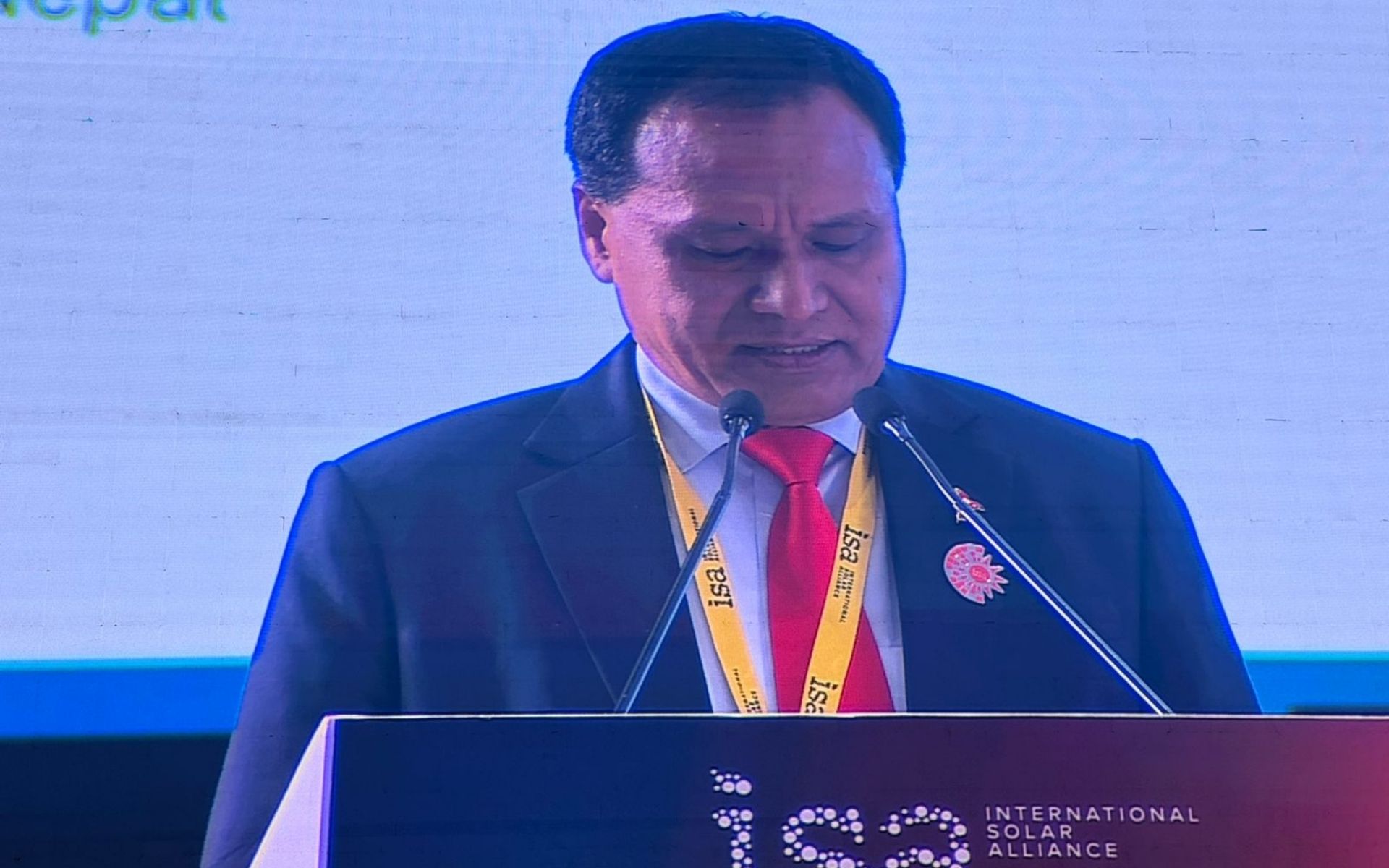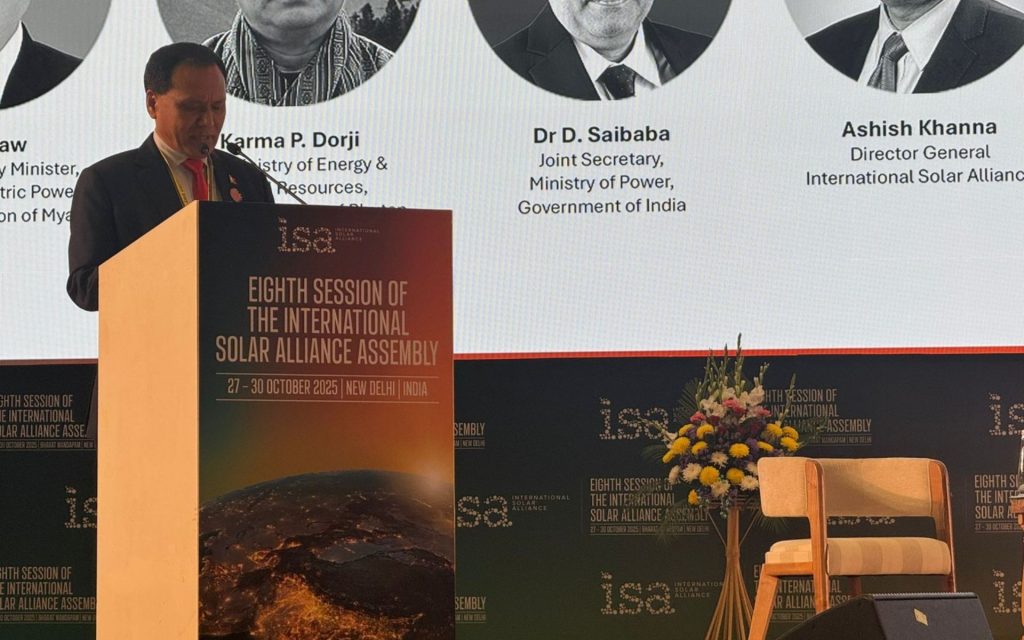
Kathmandu: Minister for Energy, Water Resources, and Irrigation, Kulman Ghising, attended the Eighth Session of the International Solar Alliance (ISA) Assembly held at Bharat Mandapam, Pragati Maidan, New Delhi, on October 28.
Addressing the session on the theme “Roadmap for Sustainable Development of Nepal’s Vast Energy Potential and Trilateral Power Trade (Nepal–India–Bangladesh)”, Minister Ghising outlined Nepal’s clean energy ambitions, regional cooperation, and vision for sustainable growth.
Emphasizing Nepal’s strong commitment to renewable energy, Minister Ghising said, “In Nepal, our clean energy journey is guided by a strong national commitment to renewables. We have developed nearly 4000 megawatts of generation capacity, with hydropower and solar contributing almost entirely—making Nepal one of the greenest electricity producers in the world.”
Nepal, he added, possesses an estimated 83,000 MW of hydropower potential and 42,000 MW of pumped storage potential, which can complement the solar and wind systems of neighbouring countries.
The Minister further shared that about 140 MW of solar energy has already been connected to the national grid, with 1,100 MW under development, as Nepal works to diversify its renewable mix for grid reliability and energy security. He also noted that hydropower projects with a combined capacity of 8 gigawatts are in various stages of development, including 4.8 gigawatts under construction with Indian public and private sector investment, demonstrating growing investor confidence and regional cooperation.

Minister Ghising underscored Nepal’s goal to become a major clean energy exporter in South Asia, targeting 15,000 MW of renewable power exports by 2035. “We see hydropower as a strategic enabler of South Asia’s clean energy transition and a vital source of grid stability and flexibility,” he stressed.
He highlighted the landmark long-term power trade agreement between Nepal and India, signed in June 2023, which envisions 10,000 MW of exports over the next decade, calling it “a major step in expanding the regional power market and strengthening energy cooperation.”
He also elaborated on ongoing trilateral energy cooperation between Nepal, India, and Bangladesh. “Cross-border energy cooperation lies at the heart of Nepal’s clean energy vision. We have established strong 2 interconnections with India and initiated trilateral power trade with Bangladesh,” he mentioned.
“During the wet season, Nepal exports around 1,100 megawatts of electricity, while in the peak dry season, we import up to 800 megawatts through various market mechanisms,” he said, adding that enhanced transmission infrastructure among the three nations will be key to a fully interconnected BIMSTEC power grid.
Highlighting Nepal’s progress, Minister Ghising recalled how the Dhalkebar–Muzaffarpur 400 kV line transformed Nepal’s energy landscape by ending a decade-long load-shedding crisis. “What began with modest 33 kV links in the 1970s has evolved into high voltage interconnections like the Dhalkebar–Muzaffarpur 400 kV line,” he further stressed.
Moreover, joint transmission planning with India up to 2035 has identified eight high-voltage interconnections capable of enabling over 16 gigawatts of cross-border power exchange.
Connecting Nepal’s clean energy vision with the global initiative “One Sun, One World, One Grid (OSOWOG),” he stressed that integrated power markets and transparent regulations is set to be vital to achieving seamless renewable energy flow across borders.
Additionally, Minister Ghising also called attention to climate resilience, noting that “despite Nepal’s negligible contribution to global emissions, the country faces frequent floods and droughts that severely impact our power systems and livelihoods.”
He urged stronger regional and international cooperation to mobilize financing for climate adaptation and resilient infrastructure.“We call for stronger regional and international cooperation to address climate-induced losses; and to mobilize financing for effective mitigation and adaptation to increasing climate impacts,” he added.
Concluding his address, Minister Ghising said, “Nepal stands at a turning point in its clean energy journey. With abundant hydropower, rising solar capacity, and expanding cross-border links, we hold the promise of powering the region sustainably. I invite our friends and partners to join us—invest in Nepal, invest in renewables, and be part of a brighter, greener future for all.”